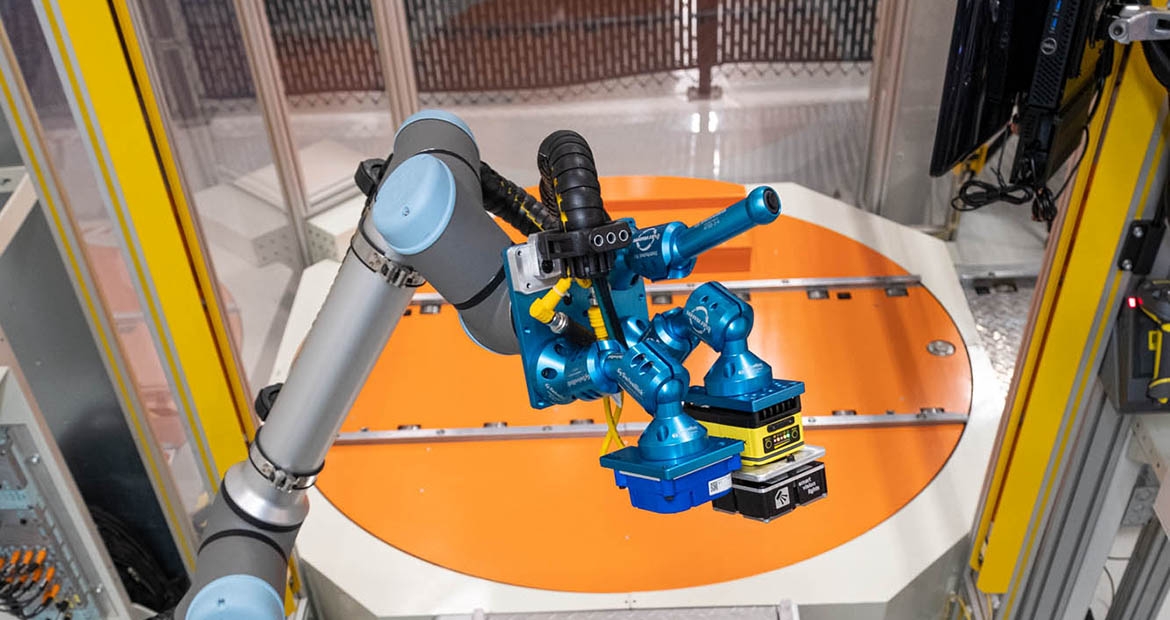
Cummins, a global manufacturer of diesel and alternative fuel engines, will more than double the number of collaborative robots it is using by the end of 2019. The company said at least 30 cobots will share workspace with employees at 15 different sites across the world by the end of the year.
This is part of Cummins’ plan to further digitize its manufacturing operations. “When we defined the Industry 4.0 framework for Cummins, we committed to embrace and deploy new technologies that would help us solve key quality challenges, and offer a safer, more efficient manufacturing environment,” said Tim Millwood, Cummins Vice President – Global Manufacturing. “Cobots add significant value in helping us achieve these goals.”
Integrated safety features allow cobots to create safer work environments for those employees who are sharing their workspace. Generally, cobots have lightweight frames with soft, rounded edges and minimized pinch points. They are also limited in both power and speed to levels suitable for human contact, and they are governed by industry-approved safety standards to avoid human injury.

Cobots are performing unsafe or repetitive tasks that, left to employees, would carry an increased risk for ergonomic injuries. The Cummins San Luis Potosi ReCon plant in Mexico is home to one of the newest cobots paired with a new vision inspection system that helps reduce such ergonomic strain and injuries. Cummins’ ergonomic risk priority score (RPS) – which helps identify and prioritize which risks to address so more employees can go home safely each day – decreased significantly from 25 to four at the site.
Increased productivity is another advantage cobots offer. In many cases, cobots take the form of an arm, which provides employees with an extra hand that is precise, reliable and versatile. Overall, errors are eliminated, quality improves and team productivity and efficiency increase. After a cobot was installed at the Charleston Turbo Plant (CTP) in Charleston, South Carolina, 10 more turbochargers were produced per eight-hour shift because downtime was eliminated.
Cobots continue to expand throughout the industry because of the many benefits they offer. They are affordable and offer reduced capital costs and a quick return on investment. They are easier to install, program, implement and maintain than traditional industrial robots. They enhance productivity, efficiency and quality. Above all, they reduce the risk to our employees by taking on unsafe or repetitive tasks that could result in injuries.
Cobot Comparison Tool: Compare 100 Collaborative Robots
Cobots are integral to Cummins’ strategy as the company invests significant resources into advancing and accelerating the use of the latest Industry 4.0 solutions and technologies. Cummins is assessing many other manufacturing processes to determine how additional cobots can be used to further create a competitive advantage.
“As I walk through our diverse plants today, I see opportunities for applying collaborative robot technology every few feet,” said Elizabeth Hoegeman, Cummins Executive Director – Global Manufacturing Engineering. “Our vision is to steadily invest in cobots over the next several years until we exhaust viable applications.”
Meanwhile, the cobots the company has installed are empowering employees, improving work conditions, and partnering with Cummins to manufacture a bright future in this new era of modern manufacturing.


Leave a Reply
You must be logged in to post a comment.